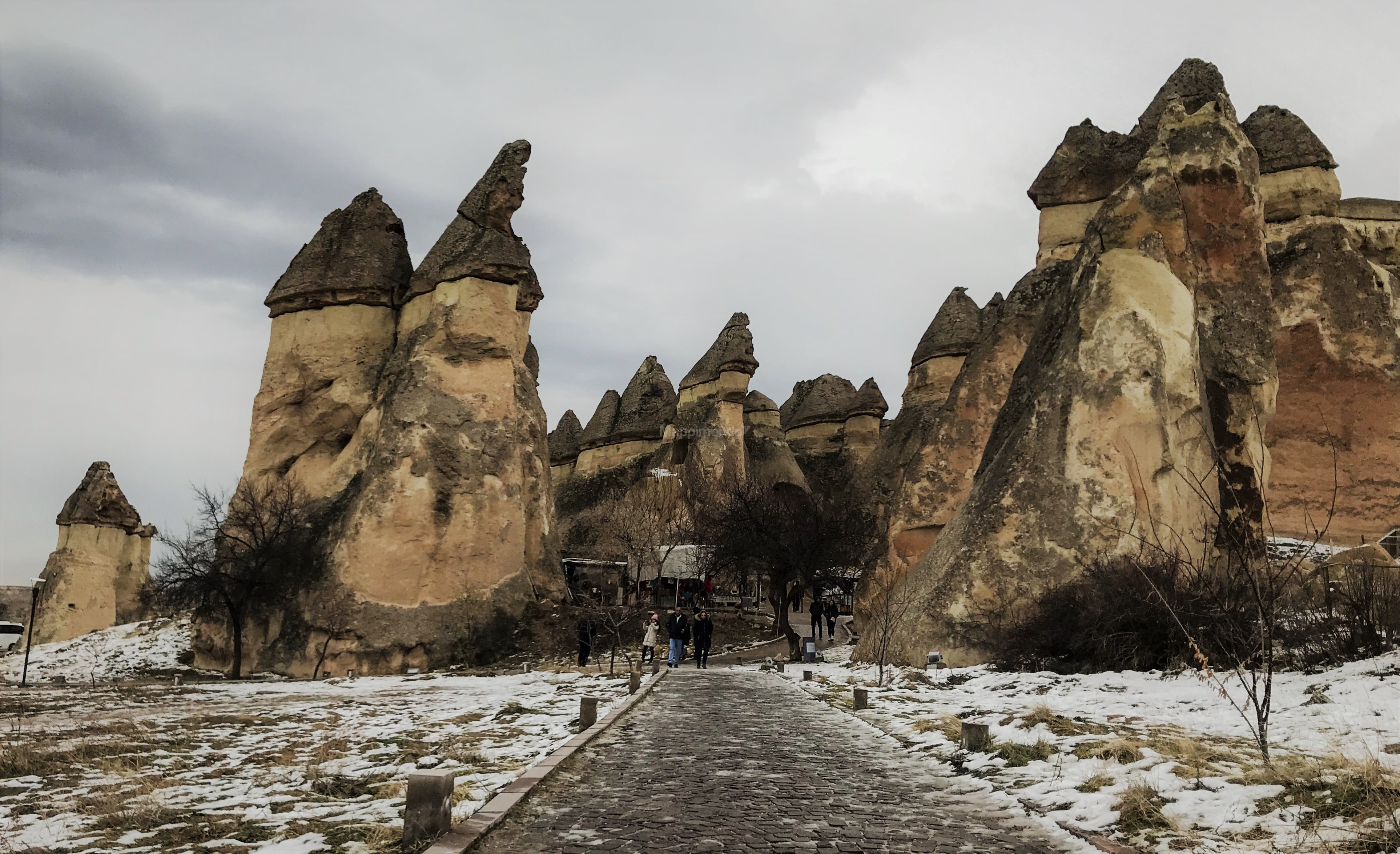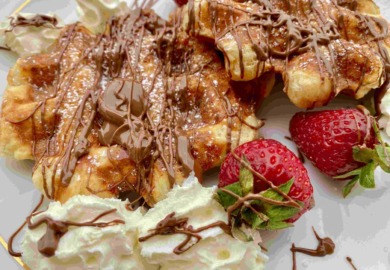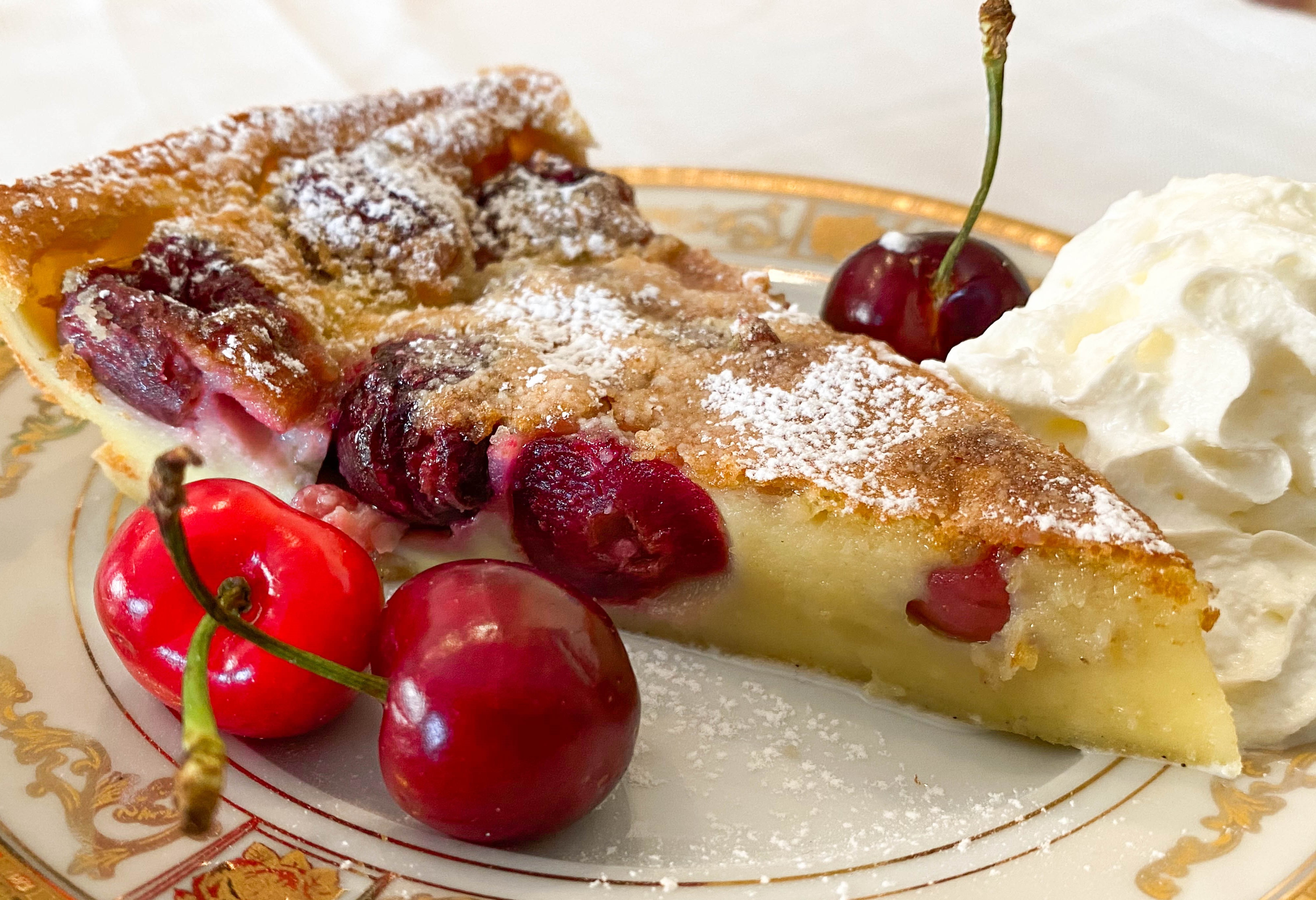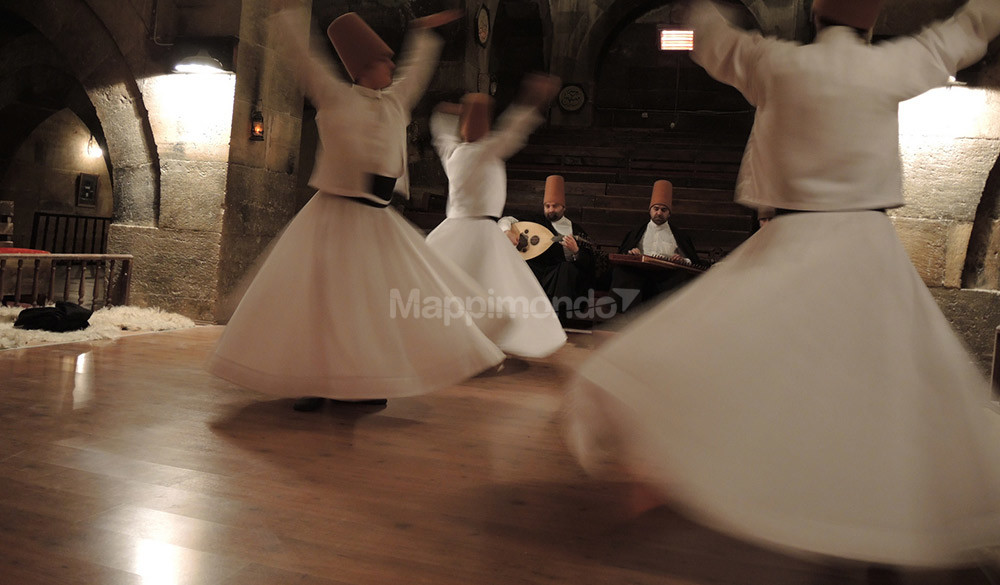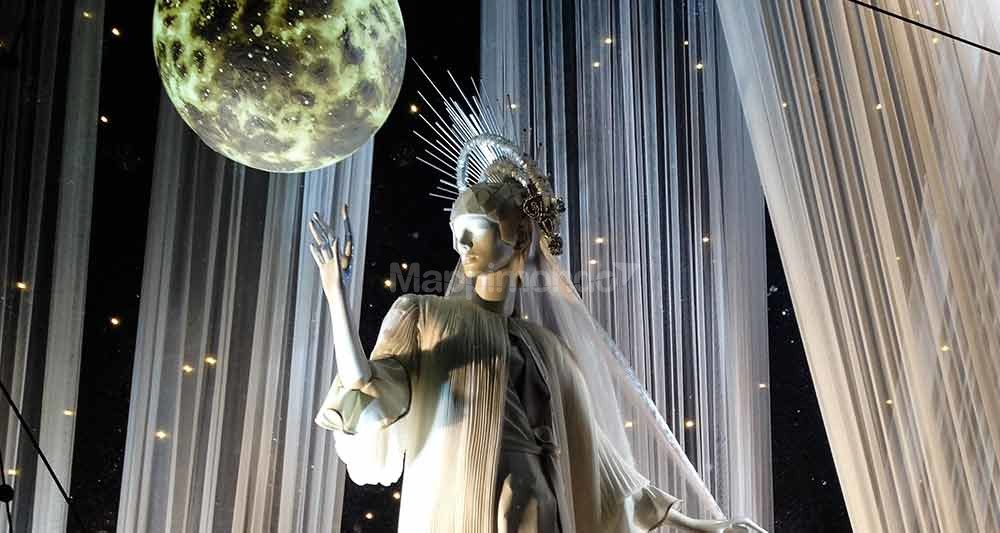Un viaggio a Praga è un viaggio attraverso misteri, antiche credenze, simbolismi, fatti magici, energie cosmiche e schemi astrologici.
 Se un re “folle”, Rodolfo II, riunisce nella sua leggendaria corte due sedicenti trasmutatori del piombo in oro come Dee e Kelley, un pittore bizzarro e satirico come Arcimboldo, un astronomo rivoluzionario come Keplero, e per di più nella città esiste un gigante di argilla, il Golem, hai una sola certezza: Praga è la città magica.
Se un re “folle”, Rodolfo II, riunisce nella sua leggendaria corte due sedicenti trasmutatori del piombo in oro come Dee e Kelley, un pittore bizzarro e satirico come Arcimboldo, un astronomo rivoluzionario come Keplero, e per di più nella città esiste un gigante di argilla, il Golem, hai una sola certezza: Praga è la città magica.
Ho visitato Praga nel freddo di gennaio, quando l’inverno la veste dei colori crepuscolari e le luci della notte le conferiscono un atmosfera mistica e magica.
Le sue meravigliose architetture, ricche di simboli enigmatici, raccontano di storie inenarrabili di fantasmi e di scienze occulte. E’ la storia che diventa leggenda e la leggenda che fa la storia.
Per secoli è stata la capitale esoterica d’Europa e con Torino e Lione forma il Triangolo della Magia Bianca.
Praga ha il suo destino segnato nel nome. Secondo alcune teorie, la parola Praga deriva dal termine slavo Pràh, il cui significato è porta di entrata, ad indicare un ideale passaggio dal nostro mondo ad universi sconosciuti.
Gli studiosi dicono che in questa città convergano delle ley lines, ossia quelle linee energetiche che si intersecano nel mondo e che creano un flusso di energia cosmica.
Fu Carlo IV, Imperatore del Sacro Romano Impero e grande sostenitore dell’alchimia, a volere nel 1355 Praga come capitale del Sacro Romano Impero ed a circondarsi nella sua corte di alchimisti, numerologi, scienziati, artisti, astrologi.
 Carlo IV disegna lui stesso il progetto della città nuova, Nove Mesto, e tutto deve seguire degli schemi astrologici. E’ a Carlo IV che si deve la costruzione del Castello e della Cattedrale di San Vito. Carlo IV fece costruire il Ponte Carlo, simbolo della città ed emblema dell’esoterismo a Praga.
Carlo IV disegna lui stesso il progetto della città nuova, Nove Mesto, e tutto deve seguire degli schemi astrologici. E’ a Carlo IV che si deve la costruzione del Castello e della Cattedrale di San Vito. Carlo IV fece costruire il Ponte Carlo, simbolo della città ed emblema dell’esoterismo a Praga.
Ma è alla fine del 1500 con l’Imperatore Rodolfo II che Praga diviene un luogo leggendario, alla cui corte, spostata nuovamente a Praga da Vienna, si succedono menti illuminate e geniali come John Dee e Edward Kelley. l’astronomo Keplero, l’alchimista Sendivogius. il pittore Arcimboldo.
Rodolfo II è un uomo introverso, coltissimo, amante delle lettere e delle arti, dicono fosse affetto da psicosi maniaco-depressiva. E’ il “re pazzo”, con il pallino per le scienze alchimistiche e l’ossessione per la Pietra Filosofale, quindi alla continua ricerca dell’immortalità, tanto da pagare somme astronomiche a chiunque potesse fornirgli l’elisir di lunga giovinezza, e della trasformazione del metallo in oro.
Rodolfo chiude letteralmente gli scienziati e gli alchimisti in case basse e piccolissime, in un vicolo stretto, che verrà in seguito chiamato Vicolo dell’oro. Segregati in quei locali, dovevano lavorare alacremente alla realizzazione della trasformazione del metallo in oro.
Per raggiungere il suo scopo, si avvale di due personaggi, che hanno il sapore di leggenda, John Dee ed Edward Kelley.
John Dee è un matematico, alchimista, dedito all’occultismo, professore di Cambridge ed astrologo personale della regina Elisabetta I, tanto da consigliarle il giorno propizio per l’incoronazione.
John Dee è noto per aver creato il Sigillum Emeth, ossia un sigillo esoterico con cui comunicava con l’oltretomba.
La collaborazione di Dee con Kelley inizia nel 1582, due anni prima del loro periodo alla corte di Rodolfo II.
Edward Kelley, inglese come Dee, è un alchimista e medium. Pare infatti che parlasse con gli angeli e che Dee lo considerasse il suo chiaroveggente.
kelley un giorno racconta a Dee di aver trovato all’Abbazia di Glastonbury una polvere rossa ed il Libro di Dunstan, ossia un libro di alchimia. Si professa capace di produrre una tintura rossa in grado di trasformare il metallo in oro.
Trasferitisi alla corte di Rodolfo II nel 1584, i due cominciano i loro esperimenti e pare che Kelley sia riuscito a trasformare il piombo in oro davanti all’imperatore.
Questo periodo di esperimenti magici finisce presto, il papa li bolla come negromanti. Dee torna in Gran Bretagna nelle grazie di Elisabetta I e Kelley invece viene imprigionato dall’Imperatore, che tenta in tutti i modi di carpire il segreto di Kelley, ma questi tenta prima una fuga gettandosi dalla torre, ma gli viene amputata la gamba e rimprigionato. Si suicida e con lui ha termine la magia della trasformazione dell’oro.
L’era di Rodolfo II è stata segnata dalla presenza di un essere antropomorfo, il Golem. E’ un gigante di argilla, un essere senz’anima e senza parola, dalla forza straordinaria e totalmente dedito al volere del suo creatore.
La leggenda narra che nel XVI secolo gli ebrei dovessero difendersi dai cattolici e dai protestanti e che il rabbino di Praga Low, profondo conoscitore della Kabbalah, avesse creato tramite un fango argilloso della Moldava un Golem gigantesco, con cui impressionare gli antisemiti. Low aveva dato vita a questo essere, ponendogli sotto la lingua la parola Emet “verità”. Aveva predetto che un giorno il Golem si sarebbe ribellato ai suoi creatori e così fu. Sfuggito al suo controllo, cominciò a distruggere tutto ciò che trovava, tanto che il rabbino dovette porre fine alla sua esistenza togliendo la prima lettera dalla parola Emet, riducendola così a Met “morte”. Il Golem ritornò fango, che fu portato nel solaio della Sinagoga.
Rodolfo II abdicò nel 1611 in favore del fratello e morì maledicendo Praga e la sua popolazione, tacciati di essere ingrati.
COSA VEDERE A PRAGA
STARE MESTO
 Stare Mesto è la città antica, il cuore medioevale di Praga. E’ il posto dove perdersi tra le stradine, soffermarsi sulla piazza della città vecchia ed ammirare i palazzi.
Stare Mesto è la città antica, il cuore medioevale di Praga. E’ il posto dove perdersi tra le stradine, soffermarsi sulla piazza della città vecchia ed ammirare i palazzi.
Per capire la Praga magica, bisogna percorrere la VIA REALE, dalla Torre delle Polveri attraverso la città vecchia sino al Castello.
Era chiamata Via Reale, poiché i re boemi la percorrevano in corteo sino a giungere alla Cattedrale di San Vito per essere incoronati.
La Via Reale è la via verso la Pietra Filosofale.
Si parte dalla TORRE DELLE POLVERI, una torre medievale, facente parte delle 13 porte che circondavano Praga, chiamata così nel 1700, quando divenne un deposito di polvere da sparo.
Si percorre la CELETNA ULICE, una via che porta alla Piazza della città vecchia. Prima di arrivarci, porre lo sguardo sulla CASA DELLA MADONNA NERA, un edificio di architettura cubista, costruito nel 1911, ma che si inserisce bene nell’architettura generale. Deve il suo nome alla statua della Madonna nera, posta in alto in uno dei suoi angoli. Ed ancora poco più avanti un simbolo esoterico, il “SOLE NERO”, che sormonta il portone di un edificio. Il sole ha 16 raggi neri ed un volto umano. Il colore nero in alchimia denota il primo passo verso la creazione della pietra filosofale, che è quello della decomposizione, della morte simbolica. Questa fase si chiama Nigredo.
Si giunge alla PIAZZA DELLA CITTA’ VECCHIA, fulcro della città e celeberrima piazza in cui si possono ammirare l’orologio astronomico con la sua torre e la chiesa gotica di Santa Maria di Tyn.
Qui l’Imperatore nel suo percorso si fermava davanti alla Chiesa di Tyn per giurare fedeltà.
 L’OROLOGIO ASTRONOMICO è un capolavoro assoluto di meccanica dalle fattezze raffinate e ricercate, è una grande allegoria. E’ l’orologio astronomico funzionante più antico del mondo. Fu costruito nel 1410 dal Maestro orologiaio Kadanè e perfezionato dal Maestro Kanus. La leggenda narra che Kanus sia stato accecato per evitare che potesse ripetere tale capolavoro, ma che il Maestro orologiaio sia riuscito ad inserirsi nei meccanismi ed a metterli fuori uso.
L’OROLOGIO ASTRONOMICO è un capolavoro assoluto di meccanica dalle fattezze raffinate e ricercate, è una grande allegoria. E’ l’orologio astronomico funzionante più antico del mondo. Fu costruito nel 1410 dal Maestro orologiaio Kadanè e perfezionato dal Maestro Kanus. La leggenda narra che Kanus sia stato accecato per evitare che potesse ripetere tale capolavoro, ma che il Maestro orologiaio sia riuscito ad inserirsi nei meccanismi ed a metterli fuori uso.
Osservate bene il meccanismo e le 4 figure poste ai lati dell’orologio a rappresentazione dei vizi capitali: a mano destra abbiamo in alto lo scheletro, che rappresenta la Morte, ed accanto la Lussuria, impersonata da un Turco. A mano sinistra la Vanità, rappresentata da un uomo con lo specchio, e l’Avarizia, vista come un ebreo, sicuramente rappresentava bene l’idea che al tempo avevano degli ebrei.
Allo scoccare di ogni ora si attiva questo straordinario meccanismo: comincia la Morte, a dirci che ineluttabilmente arriva per tutti. La Morte tira la corda che ha nella mano destra e di conseguenza fa girare la clessidra, posta nella mano sinistra. La Lussuria scuote la testa si affacciano in alto a coppia i Dodici Apostoli (11 + San Paolo), per finire con il canto del gallo.
Il quadrante astronomico è un astrolabio per calcolare la posizione delle stelle. Ha due lancette, una per il sole e l’altra per la luna. Ha un anello esterno ed uno interno con i simboli dello zodiaco. Sullo sfondo al centro in azzurro c’è la terra, in alto in blu il cielo sopra l’orizzonte ed in basso in rosso e nero il cielo sotto l’orizzonte.
Si può salire sulla TORRE DEL MUNICIPIO, la visuale sulla piazza e sulla città è bellissima.
La CHIESA DI SANTA MARIA DI TYN ha un imponente facciata in stile gotico con due torri e le guglie, di cui si vede solo la parte alta, mentre l’interno è barocco. C’è un organo a canne, che dicono produca un suono raffinatissimo, io non l’ho sentito! Prende il nome dall’adiacente cortile di Tyn e vi si accede lateralmente.
 Considerando l’orologio sulla destra, subito dopo si incontra la CASA AL MINUTO, dove visse per alcuni anni Franz Kafka. Ha la facciata decorata con graffiti, raffiguranti scene tratte dalla Bibbia e dalla mitologia.
Considerando l’orologio sulla destra, subito dopo si incontra la CASA AL MINUTO, dove visse per alcuni anni Franz Kafka. Ha la facciata decorata con graffiti, raffiguranti scene tratte dalla Bibbia e dalla mitologia.
Lungo la Via Reale si prosegue sulla Karlova, una via che conduce al Ponte Carlo. E’ ricchissima di negozi in cui perdersi tra souvenir e cristalli di Boemia.
Ad angolo con la Liliova, c’è la CASA AL SERPENTE D’ORO, di stile rinascimentale con decorazioni barocche ed in alto si nota questo serpente color oro, con testa a 3 punte che ha in bocca un umano. Il serpente ha la connotazione simbolica della fertilità, inteso come l’essere umano che esce dalla sua bocca. E’ qui che è nato il primo caffe di Praga nel 1713, aperto da un uomo nato a Damasco, che veniva chiamato da tutti l’arabo, per il turbante e l’abbigliamento. Pare che prima del suo arrivo, il caffè fosse una bevanda da farmacia e non da gustare. Compra la casa al Serpente d’Oro ed apre questo caffè, in cui insegnerà ai praghesi il magico piacere di un caffè.
CASA AL POZZO D’ORO: una casa in stile rinascimentale con storie di fantasmi. Le leggende si sprecano su questa casa ed io non so a chi credere. C’è chi narra che per lungo tempo abbiano vagato di notte le teste di una coppia di spagnoli, giunti in quella casa, che un tempo era un albergo. Il proprietario, accecato dalle loro ricchezze, che i due evidentemente ostentavano, li uccise. Decapitò loro la testa e la gettò nella Moldava, mentre i corpi furono messi in cantina. Per l’oste non finì bene, la casa bruciò con tutto l’oro e lui morì a cavallo, mentre scappava.
Continuando la via, si giunge alla TORRE DEL PONTE DELLA CITTA’ VECCHIA che dà accesso al PONTE CARLO.
PONTE CARLO
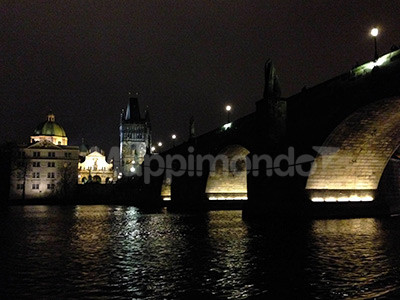 Ponte Carlo è il ponte gotico simbolo di Praga. Con una lunghezza di 516 metri attraversa la Moldava e separa Stare Mesto da Mala Strana.
Ponte Carlo è il ponte gotico simbolo di Praga. Con una lunghezza di 516 metri attraversa la Moldava e separa Stare Mesto da Mala Strana.
E’ opera dell’architetto tedesco Petr Parler, che, su ordine di Carlo IV, progettò la ristrutturazione del castello e la cattedrale di San Vito. La costruzione durò 50 anni ed entrambi, l’imperatore Carlo IV e l’architetto Parler, non videro la conclusione definitiva dell’opera.
L’astrologo di corte calcolò esattamente il giorno, mese, anno ed ora di inizio dei lavori. Ne viene fuori una data palindroma 135797531, che corrisponde al 9 luglio 1357 alle ore 5 e 31 del mattino, in maniera crescente o decrescente termina con il numero 9. Questa data ha un valore magico di protezione della città e del ponte.
Nel XVII secolo, sul ponte furono sistemate 30 statue di santi per volere dei Gesuiti. La prima statua ad essere realizzata è quella di San Giovanni Nepomuceno, protettore della Boemia. San Giovanni Nepomuceno era il confessore della regina Sofia, moglie di Venceslao IV. Poiché il religioso si era rifiutato di rivelargli le confessioni della regina, re Venceslao ordinò che fosse gettato dal vecchio ponte nella Moldava e Giovanni Nepomuceno morì annegato. La statua venne deposta nel punto esatto in cui il Santo fu gettato.
 Secondo la leggenda, insieme a San Giovanni crollò anche l’arcata del ponte e per lungo tempo fu impossibile ricostruirlo.
Secondo la leggenda, insieme a San Giovanni crollò anche l’arcata del ponte e per lungo tempo fu impossibile ricostruirlo.
Pare inoltre che in uno dei suoi pilastri ci sia una parte del tesoro dei cavalieri templari.
Si narra anche che Parler decise di aggiungere alla malta una speciale mistura fatta di uova, ma che non fossero presenti a sufficienza nella città. Fu così che da tutto il regno arrivarono sudditi con carichi di uova di ogni genere, incluse sode, e formaggi.
Tutto è stato calcolato secondo schemi astrologici ben precisi, ad esempio al solstizio d’estate la Torre del ponte della città vecchia è disposta in modo che la luce del tramonto illumini la lucerna della torre della cattedrale di san vito, dove si trovava il cranio del santo.
Anche la Torre del ponte della città vecchia è stato progettata da Parler e comprende la statua di Carlo IV in posizione seduta.

Tutto è stato calcolato secondo schemi astrologici ben precisi, ad esempio al solstizio d’estate la Torre della città vecchia è disposta in modo che la luce del tramonto illumini la lucerna della torre della cattedrale di san vito, dove si trovava il cranio del santo.
Il Ponte Carlo termina in Mala Strana con due Torri, quella più piccola è la Torre di Giuditta del 1158, appartenente al vecchio ponte, e la più alta è la Torre di Mala Strana.
MALA STRANA
 Continuando la Via Reale, uscendo dal Ponte Carlo si arriva a Mala Strana ossia “La Piccola Città”. Si percorre la via Mostecka, dove avveniva la consegna delle chiavi della città al Re, che poi proseguiva in corteo lungo la salita della Nerudova per poi giungere al castello.
Continuando la Via Reale, uscendo dal Ponte Carlo si arriva a Mala Strana ossia “La Piccola Città”. Si percorre la via Mostecka, dove avveniva la consegna delle chiavi della città al Re, che poi proseguiva in corteo lungo la salita della Nerudova per poi giungere al castello.
Mala Strana è un quartiere bellissimo con le sue case barocche, i suoi caffè e pub antichi.
A Mala Strana c’è il capolavoro barocco della CHIESA DI SAN NICOLA. Fu commissionata dai Gesuiti ed i lavori iniziarono nel 1673 per terminare nel 1755.
Al suo interno si può ammirare il più grande affresco d’Europa, l’opera di Johanss Kracker “Apoteosi di San Nicola” ed un organo a 2550 canne, che fu suonato da Mozart nel 1787.
 La via NERUDOVA è famosa per le sue case barocche, i suoi negozi e bar, posti su di un irta salita. Deve il suo nome al poeta ceco Jan Neruda, da cui il poeta Pablo Neruda trasse il nome.
La via NERUDOVA è famosa per le sue case barocche, i suoi negozi e bar, posti su di un irta salita. Deve il suo nome al poeta ceco Jan Neruda, da cui il poeta Pablo Neruda trasse il nome.
Lungo la Nerudova si può ammirare la CASA DEL FERRO DI CAVALLO D’ORO, poiché sopra il portale c’è un bassorilievo rappresentante San Venceslao a cavallo e pare che il cavallo avesse il ferro d’oro.
LA CASA DEI TRE VIOLINI, con tre violini raffigurati sopra il portale in quanto apparteneva ad una famiglia di costruttori di violini, anche questa è una casa infestata. Si narra che nelle notti di luna piena ci siano 3 scheletri che suonano i violini e che non amino essere criticati la loro musica!
CASA ALLA CHIAVE D’ORO reca una chiave dorata sul frontespizio.
Nel percorso della Via Reale, siamo quasi giunti alla fine.
CASTELLO DI PRAGA
 L’ultima tappa della “Via Reale” è l’arrivo al Castello, in cui il Re veniva incoronato con lo scettro, la corona e la sfera reale nella Cattedrale di San Vito.
L’ultima tappa della “Via Reale” è l’arrivo al Castello, in cui il Re veniva incoronato con lo scettro, la corona e la sfera reale nella Cattedrale di San Vito.
Il Castello di Praga, in ceco Prazsky Hrad, si erge su una delle nove alture di Praga e svetta imperioso sulla città.
E’ il più grande castello del mondo, occorre prepararsi a lunghe camminate e salite per visitarlo. Attualmente è la residenza del Presidente della Repubblica Ceca.
Si paga un biglietto per visitarlo, tranne la chiesa di San Vito ed i cortili, che sono visitabili anche senza.
La prima costruzione in pietra risale al 884 dopo Cristo.
 E’ però in epoca romanica che venne costruito il Palazzo Reale, la Basilica di San Giorgio e la Cattedrale della città con i resti di San Vito.
E’ però in epoca romanica che venne costruito il Palazzo Reale, la Basilica di San Giorgio e la Cattedrale della città con i resti di San Vito.
L’Imperatore Carlo IV trasferisce la capitale del Sacro Romano Impero e conferisce un forte cambiamento alla città. A sostituzione della basilica romanica, viene costruita l’attuale cattedrale secondo le logiche dello stile gotico, in voga in Francia all’epoca. Viene riedificato il Palazzo Reale.
In epoca rinascimentale fu costruito il Palazzo del Belvedere, la Sala della Pallacorda, i giardini all’italiana e ci furono ampliamenti al corpo principale.
Con l’Imperatore Rodolfo II il Castello conobbe il suo periodo di massimo splendore.
Ci si accede alla Prima corte tramite la Porta dei Giganti, in cui si assiste al cambio della guardia. Qui troviamo il “tesoro di San Vito”.
Nella Seconda corte c’è la Sala Spagnola e la Galleria Rudolfina, in cui sono esposti capolavori rinascimentali di Tiziano, Rubens, Tintoretto.
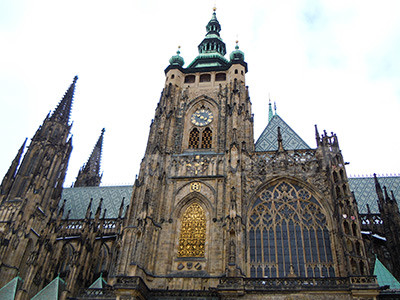 Nella Terza corte c’è la CATTEDRALE DI SAN VITO, la splendida cattedrale gotica voluta da Carlo IV. L’imperatore prese da Pavia le reliquie di San Vito, da Padova la testa di San Luca e da Feltre la testa di San Vittore.
Nella Terza corte c’è la CATTEDRALE DI SAN VITO, la splendida cattedrale gotica voluta da Carlo IV. L’imperatore prese da Pavia le reliquie di San Vito, da Padova la testa di San Luca e da Feltre la testa di San Vittore.
La chiesa fu iniziata dall’architetto Mattia di Arraz nel 1344, ma morì 8 anni dopo ed i lavori furono affidati all’architetto tedesco Peter Parler, che finì la parte orientale della chiesa. La parte occidentale è postuma, si colloca tra XIX e XX secolo.
Si ammirano le vetrate colorate, alte 14 metri, e ce n’è una realizzata da Alfons Mucha, raffigurante i Santi Cirillo e Metodio.
La Grande Torre è alta 90 metri e ci sono da percorrere 297 gradi ripidissimi. Da qui sopra la vista è spettacolare.
 Vi è la Tomba di San vito, il protettore della Boemia; la cappella di San Giovanni Nepomuceno, di stile barocco, in argento sormontata da un baldacchino. Si narra che alla sua riesumazione, abbiano trovato la lingua ancora irrorata dal sangue.
Vi è la Tomba di San vito, il protettore della Boemia; la cappella di San Giovanni Nepomuceno, di stile barocco, in argento sormontata da un baldacchino. Si narra che alla sua riesumazione, abbiano trovato la lingua ancora irrorata dal sangue.
La Cappella di San Venceslao, progettata dallo stesso architetto Parler, con pareti decorate con pannelli dorati e pietre semipreziose. Una porta sul lato meridionale nasconde la scala che conduce alla Sala dell’Incoronazione.
BASILICA DI SAN GIORGIO: è una chiesa dalla facciata rossa protobarocca, che però nasconde una chiesa barocca romanica.
VICOLO DELL’ORO: è costituito da case basse e piccolissima, inizialmente costruite per le guardie di Rodolfo II, ma adibite dallo stesso Rodolfo ai famosi alchimisti, come Dee e Kelley, che lavorarono alla trasformazione del metallo in oro ed alla Grande Opera alchemica, ossia la produzione della Pietra Filosofale.
Dal 1916 al 1917, al numero 22 vi abitò Franz Kafka, nell’appartamento che fu della sorella.
NOVE MESTO
Nove Mesto fu fondata da Carlo IV nel 1348 e vuol dire città nuova. Nonostante l’origine sia medievale, buona parte degli edifici sono stati costruiti tra il 1800 ed il 1900.
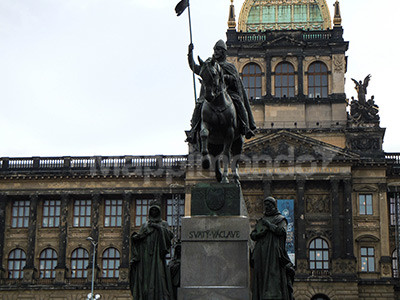 A Nove Mesto troviamo PIAZZA VENCESLAO, in cui svetta la statua equestre di San Venceslao.
A Nove Mesto troviamo PIAZZA VENCESLAO, in cui svetta la statua equestre di San Venceslao.
Piazza Venceslao è diventata il teatro di moti rivoluzionari ed eventi importanti per la Repubblica Ceca, qui infatti fu annunciata nel 1989 la caduta del regime comunista.
E qui, in quel periodo che va sotto il nome di Primavera di Praga, Jan Palach nel 1969 si diede fuoco per protesta contro il regime comunista.
La CASA DANZANTE è situata a Nove Mesto lungo il fiume. È opera degli architetti Milunic e Gehry. Questa casa è stata anche ribattezzata palazzo Ginger e Fred in onore di Ginger Rogers e Fred Astaire. La torre di vetro si restringe al centro e sembra abbracciare l’altro edificio.
 MUSEO MUCHA è un museo dedicato ad Alfons Mucha, il grande artista ceco dell’Art Nouveau. Questo stile è fortemente presente nella città e Mucha ne fu il maggiore esponente. Troviamo una collezione di grafiche pubblicitarie come quelle per Moët & Chandon, dipinti ed i famosi manifesti parigini, che lo hanno reso celebre nel mondo, in cui ritrae la “divina” Sarah Bernhardt in Gismonda, Medea e Lorenzaccio.
MUSEO MUCHA è un museo dedicato ad Alfons Mucha, il grande artista ceco dell’Art Nouveau. Questo stile è fortemente presente nella città e Mucha ne fu il maggiore esponente. Troviamo una collezione di grafiche pubblicitarie come quelle per Moët & Chandon, dipinti ed i famosi manifesti parigini, che lo hanno reso celebre nel mondo, in cui ritrae la “divina” Sarah Bernhardt in Gismonda, Medea e Lorenzaccio.
Io adoro Mucha e l’Art Nouveau e consiglio a tutti la visita di questo piccolo museo.


